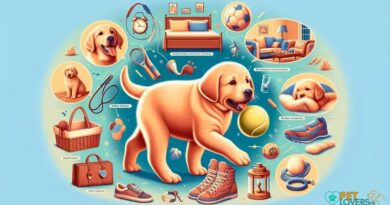What is household hazards for pets
Understanding Household Hazards for Pets
Household hazards for pets encompass a wide range of dangers that can be found in the average home. These hazards can pose serious risks to the health and safety of our furry companions. From toxic substances to physical dangers, it’s essential for pet owners to be aware of these potential threats to ensure a safe living environment for their pets.
Toxic Plants and Flowers
Many common household plants and flowers can be toxic to pets. For instance, lilies, azaleas, and poinsettias are known to cause severe reactions in cats and dogs. Pet owners should educate themselves about which plants are safe and which should be avoided. Keeping toxic plants out of reach or opting for pet-friendly alternatives can significantly reduce the risk of poisoning.
Household Cleaning Products
Cleaning products are another significant source of household hazards for pets. Many common cleaners contain chemicals that can be harmful if ingested or inhaled. Products such as bleach, ammonia, and certain detergents can lead to serious health issues. It’s advisable to use pet-safe cleaning products and to ensure that areas are well-ventilated when cleaning.
Food and Kitchen Hazards
The kitchen is often a hotspot for household hazards for pets. Foods that are safe for humans can be toxic to pets, including chocolate, grapes, and onions. Additionally, leaving food unattended can lead to accidental ingestion of harmful substances. Pet owners should be vigilant about what foods are accessible to their pets and educate themselves on safe versus unsafe foods.
Electrical Cords and Outlets
Electrical cords and outlets pose a physical hazard to pets, especially curious puppies and kittens. Chewing on cords can lead to severe electrical shocks or even fires. To mitigate this risk, pet owners should secure cords with protective covers and ensure that outlets are pet-proofed to prevent any accidents.
Medications and Supplements
Household medications and supplements can be extremely dangerous for pets if ingested. Many common human medications, such as ibuprofen and acetaminophen, are toxic to animals. It’s crucial to store all medications out of reach of pets and to be cautious about leaving pills unattended on countertops or tables.
Small Objects and Toys
Small objects and toys can also be household hazards for pets. Items such as coins, rubber bands, and small toys can be choking hazards or cause intestinal blockages if swallowed. Pet owners should regularly check their living spaces for small items that could pose a risk and ensure that pet toys are appropriate for their size and chewing habits.
Open Windows and Balconies
Open windows and balconies can be dangerous for pets, particularly for those that enjoy climbing or exploring. Falls from heights can lead to serious injuries or fatalities. To prevent accidents, pet owners should secure windows with screens and supervise pets when they are near open areas.
Heat Sources and Fire Hazards
Heat sources such as stoves, fireplaces, and space heaters can pose significant risks to pets. Burns and heatstroke are real dangers, especially in the warmer months. Pet owners should ensure that pets are kept at a safe distance from these sources of heat and educate themselves on the signs of overheating in pets.
Conclusion
Being aware of household hazards for pets is crucial for every pet owner. By taking proactive measures to identify and mitigate these risks, we can create a safer environment for our beloved companions. Regularly assessing our homes for potential dangers and making necessary adjustments can help ensure that our pets remain healthy and happy.



